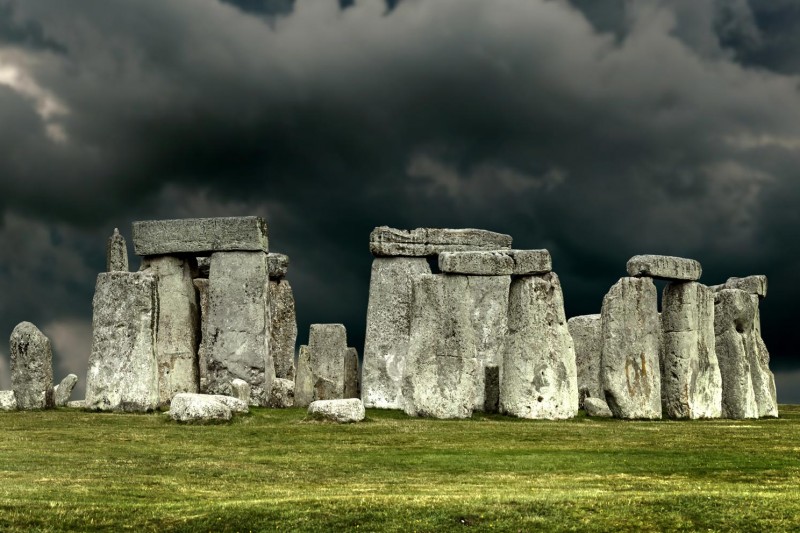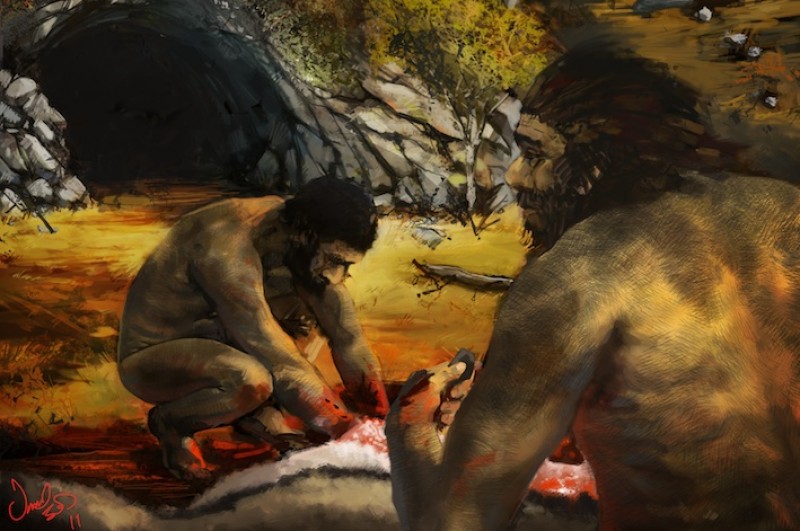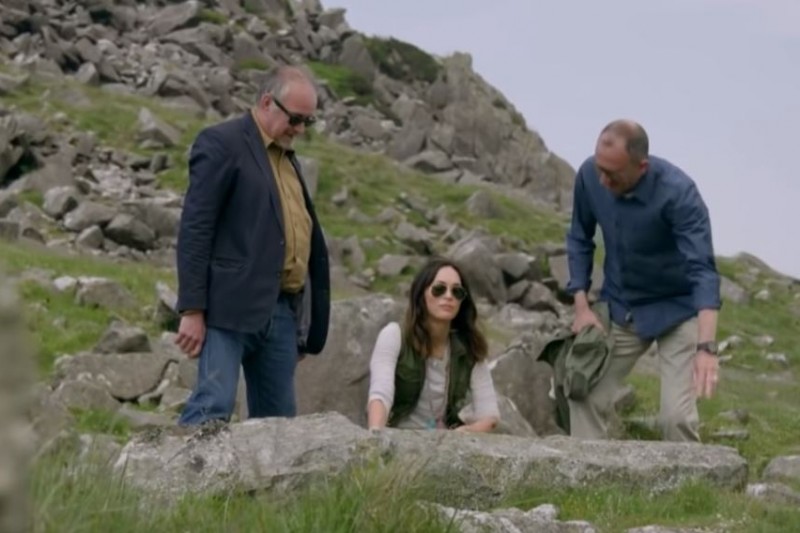The background
Black Down (Winterbourne Steepleton, Dorset) is a landscape feature that gives its name to a sub-rectangular enclosure that is defined by a single bank and ditch defence system. It has a single entrance gap on the east side. Situated on relatively high ground, the site has extensive views towards the Dorset coastline to the south and to the south-west. It also has a potential line of site north-west to the known Roman fort on Waddon Hill (Stoke Abbott).
In 1970 Bill Putnam, then of Weymouth College of Education (and later of Bournemouth University), decided to carry out an archaeological excavation at the Black Down ‘fortlet’ in order to test the idea that it might have served as a signalling station for the Roman garrison at Waddon Hill.
The published evidence
An interim report that was published in the Proceedings of the Dorset Natural History and Archaeological Society (The Proceedings) gave brief details of the findings of the excavation (1971). Dr Putnam also carried out smoke tests to determine whether Black Down could have served as a signalling point for the Roman military or not.
Apparently, the tests demonstrated that signalling would have been possible. The archaeological evidence indicated that although the Black Down enclosure was likely to be Roman in origin, there was room for reasonable doubt. The wording of the interim report lacked conviction.
Recent re-assessment
In 2016, the archive from the Black Down excavation was reassessed by Iain Hewitt (Bournemouth University) supported by two undergraduate students of BSc (Hons) Archaeological, Anthropological and Forensic Sciences (Jessica Fangmann and Ana Gonzalez Ruiz). A new report has been produced with Maureen Putnam as a co-author, and this was published in October 2016 in the Proceedings. This report included site plans, a section drawing, and photographic illustrations for the first time. It can be downloaded via ResearchGate.
Future project work
The new report considers the strength of the evidence for the purpose of the Black Down fortlet and its importance for understanding the activities of the Roman army in Dorset during the first century AD. The potential for a new investigative project at Black Down is considered and the case is made for expanding the investigation across a wider area.
The case for Roman military signal stations is best made when clusters of these can be identified in the landscape and the best examples of this are the Limes (Germany), and Hadrian’s Wall (UK). At best, the Blackstone site is a single isolated example and for this reason, it is clear that more fieldwork needs to be done.
Hayley Roberts of Bournemouth University has secured consent under section 42 of the Ancient Monuments and Archaeological Areas Act to carry out a new geophysical survey of the Black Down site. The results of the new work will be made available on this website.
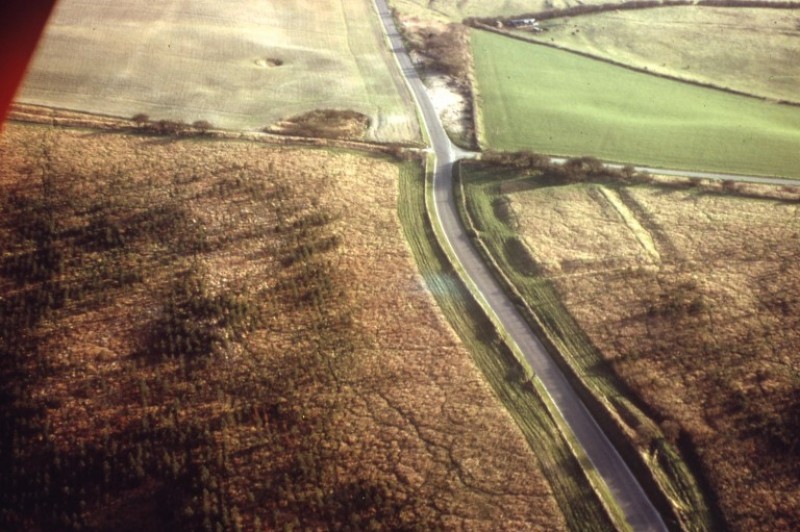 Black Down fortlet, Winterbourne Steepleton, Dorset, facing south. The photograph (1970) shows the single bank and ditch defences with the sole entrance gap to the east (Bournemouth University Bill Putnam. Collection).
Black Down fortlet, Winterbourne Steepleton, Dorset, facing south. The photograph (1970) shows the single bank and ditch defences with the sole entrance gap to the east (Bournemouth University Bill Putnam. Collection).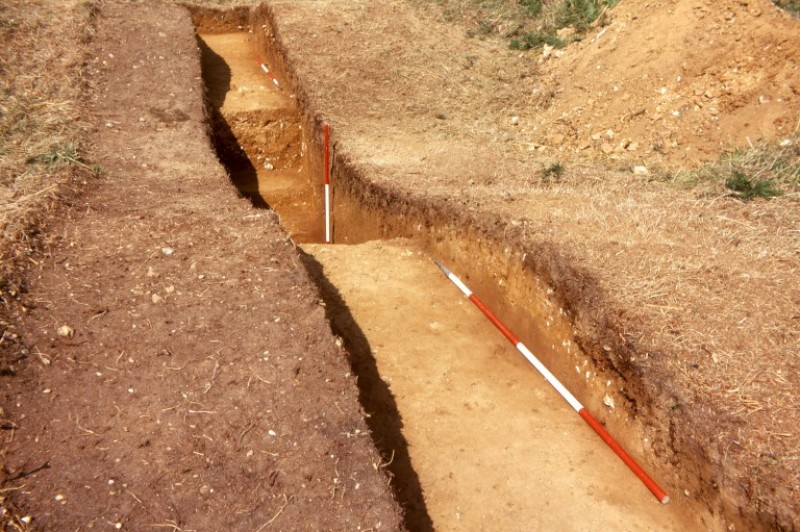 Trench 2 at Black Down cut through the defences of the fortlet close to the south-west corner. The defences comprised a bank, ditch and counterscarp bank (Bournemouth university. Bill Putnam Collection)
Trench 2 at Black Down cut through the defences of the fortlet close to the south-west corner. The defences comprised a bank, ditch and counterscarp bank (Bournemouth university. Bill Putnam Collection)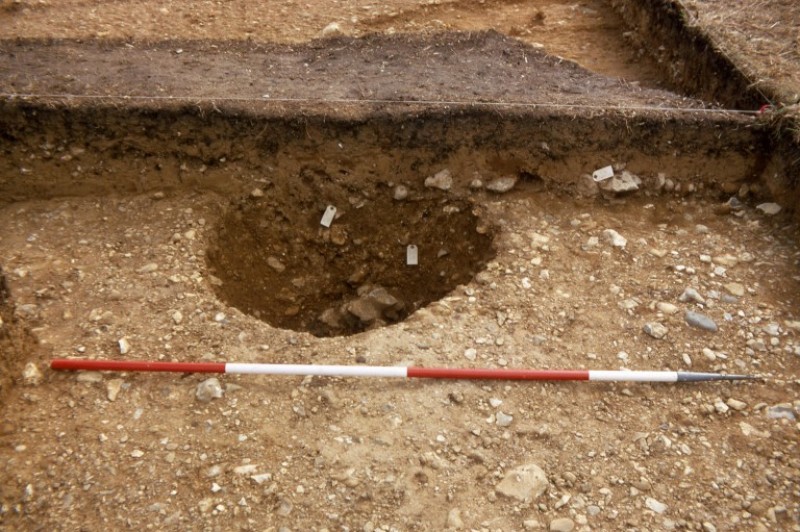 Black Down. Gate post detail in Trench 1. A second gate post was also identified at a distance of 2.8m from the first. The excavator believed that the gates had been systematically removed when the fortlet was abandoned during the first century AD (Bournemouth University, Bill Putnam Collection).
Black Down. Gate post detail in Trench 1. A second gate post was also identified at a distance of 2.8m from the first. The excavator believed that the gates had been systematically removed when the fortlet was abandoned during the first century AD (Bournemouth University, Bill Putnam Collection).